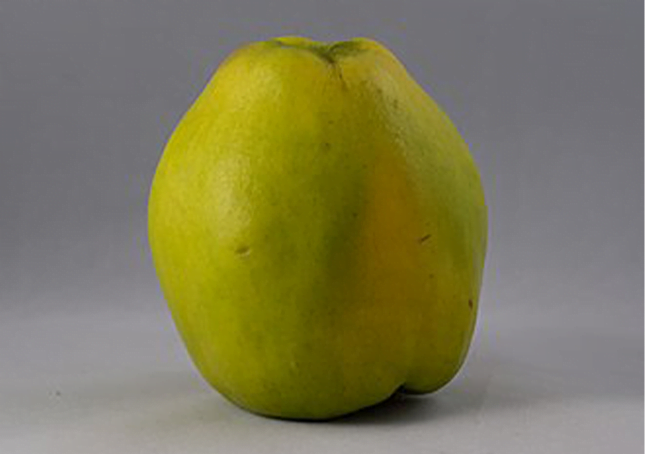Quince

The quince (/ˈkwɪns/; Cydonia oblonga) is the sole member of the genus Cydonia in the family Rosaceae (which also contains apples and pears, among other fruits). It is a tree fruit that bears a deciduous pome fruit, similar in appearance to a pear, and is bright golden-yellow when mature. The raw fruit is a source of food. The tree has been grown by landscape architects for its attractive pale pink blossoms and other ornamental qualities.
The tree grows 5 to 8 metres (16 to 26 feet) high and 4 to 6 m (13 to 20 ft) wide. The fruit is 70 to 120 mm (3 to 4 1⁄2 in) long and 60 to 90 mm (2 1⁄2 to 3 1⁄2 in) across.
The immature fruit is green with dense grey-white fine hair, most of which rubs off before maturity in late autumn when the fruit changes colour to yellow with hard, strongly perfumed flesh. The leaves are alternately arranged, simple, 60–110 mm (2 1⁄2–4 1⁄2 in) long, with an entire margin and densely pubescent with fine white hairs. The flowers, produced in spring after the leaves, are white or pink, 50 mm (2 in) across, with five petals.
The seeds contain nitriles, which are common in the seeds of the rose family. In the stomach, enzymes or stomach acid or both cause some of the nitriles to be hydrolysed and produce hydrogen cyanide, which is a volatile gas. The seeds are only toxic if eaten in large quantities.
Four other species previously included in the genus Cydonia are now treated in separate genera. These are Pseudocydonia sinensis and the three flowering quinces of eastern Asia in the genus Chaenomeles. Another unrelated fruit, the bael, is sometimes called the “Bengal quince”.
The modern name originated in the 14th century as a plural of quoyn, via Old French cooin from Latin cotoneum malum / cydonium malum, ultimately from Greek κυδώνιον μῆλον, kydonion melon “Kydonian apple”.
Cydonia is included in the subfamily Amygdaloideae.
